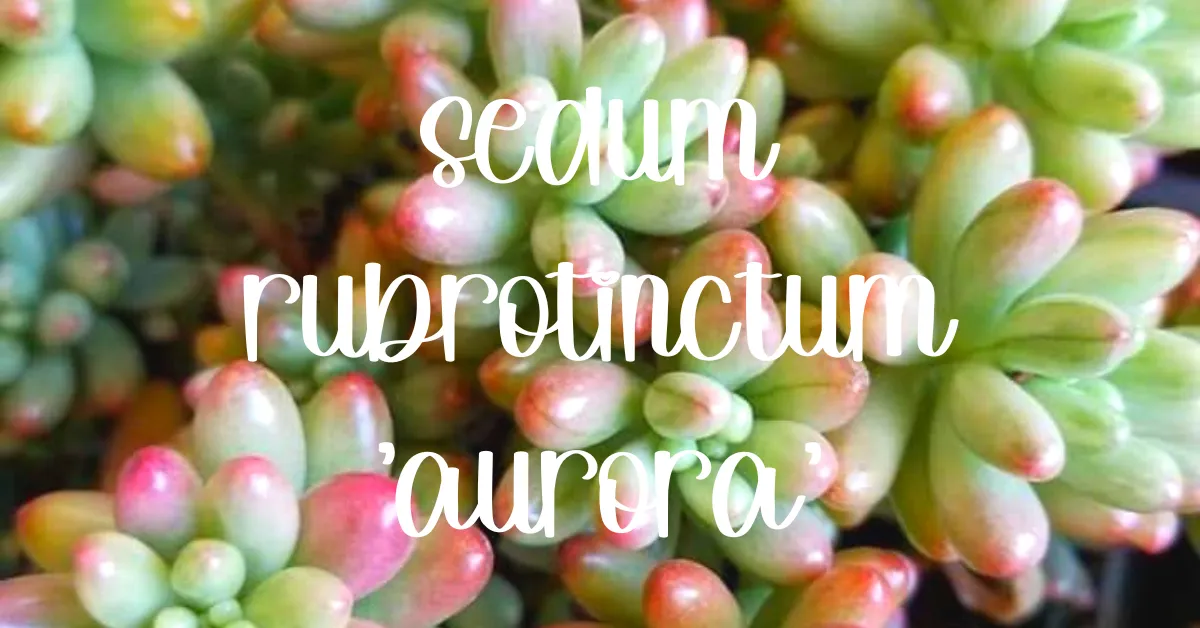Welcome to our comprehensive care guide for Sedum Rubrotinctum ‘Aurora,’ a beautiful succulent that is known for its unique characteristics and vibrant colors. In this guide, we will provide you with all the information you need to successfully care for this succulent, including its natural habitat, unique adaptations, appearance, growth habits, light and temperature requirements, watering needs, propagation methods, common problems, and more. Whether you are a beginner or an experienced succulent enthusiast, this guide will help you ensure the health and vitality of your Sedum Rubrotinctum ‘Aurora.’
Dig in!
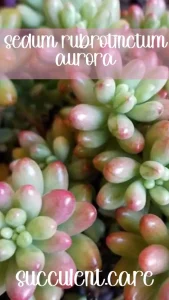
Natural Habitat and Common Names
Sedum Rubrotinctum ‘Aurora,’ also known as Pink Jelly Bean or Pork and Beans, is native to Mexico and parts of South America. In its natural habitat, this succulent can be found growing in rocky, well-draining soil in arid regions. Its ability to withstand high temperatures and low water availability makes it well-suited for dry and desert-like environments.

Source: Etsy
Unique Adaptations
One of the unique adaptations of Sedum Rubrotinctum ‘Aurora’ is its ability to store water in its fleshy, jelly bean-shaped leaves. This adaptation allows the plant to survive in arid conditions by retaining water during periods of drought. Additionally, the leaves can change color depending on environmental factors such as light intensity and temperature, giving Sedum Rubrotinctum ‘Aurora’ its striking appearance.

Source: Etsy
Appearance and Growth Habits
Sedum Rubrotinctum ‘Aurora’ is a low-growing succulent that forms trailing stems. The leaves are small, elongated, and tightly packed, resembling jelly beans. The leaves start off green but turn shades of pink, red, or purple when exposed to bright sunlight or cool temperatures. Sedum Rubrotinctum ‘Aurora’ can reach a height of 6 to 8 inches (15 to 20 cm) and spread up to 12 inches (30 cm) wide. It has a fast growth rate, making it an excellent choice for ground cover or hanging baskets.
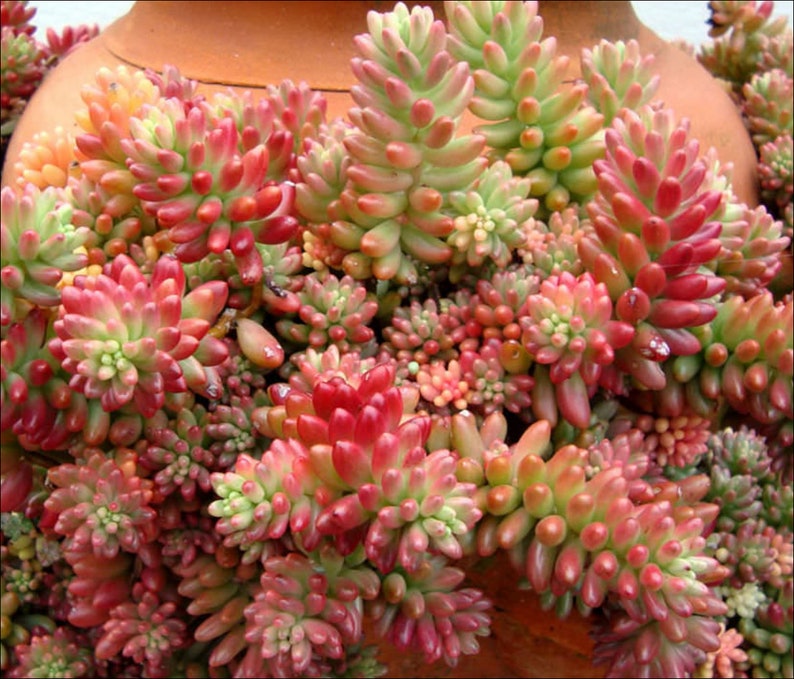
Source: Etsy
Flower Color, Blooming Time, and Triggers
The flowers of Sedum Rubrotinctum ‘Aurora’ are small, star-shaped, and yellow in color. They typically bloom in late spring or early summer, adding an additional splash of color to the plant. The trigger for blooming is usually a combination of longer daylight hours and warmer temperatures. While the flowers are not the main attraction of Sedum Rubrotinctum ‘Aurora’, they do add beauty to the overall display.
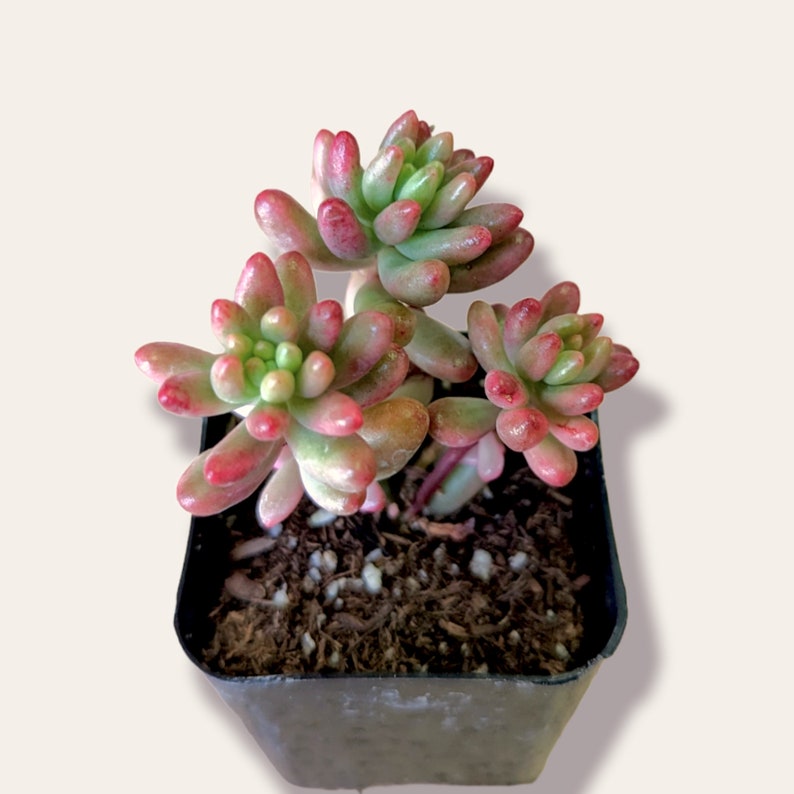
Source: Etsy
Growth Rate and Seasonality
As mentioned earlier, Sedum Rubrotinctum ‘Aurora’ has a fast growth rate. It is an actively growing succulent, and its growth is most prominent during the spring and summer months. During this time, the plant produces new stems, leaves, and eventually flowers. In the winter months, Sedum Rubrotinctum ‘Aurora’ may enter a period of slower growth or become partially dormant.
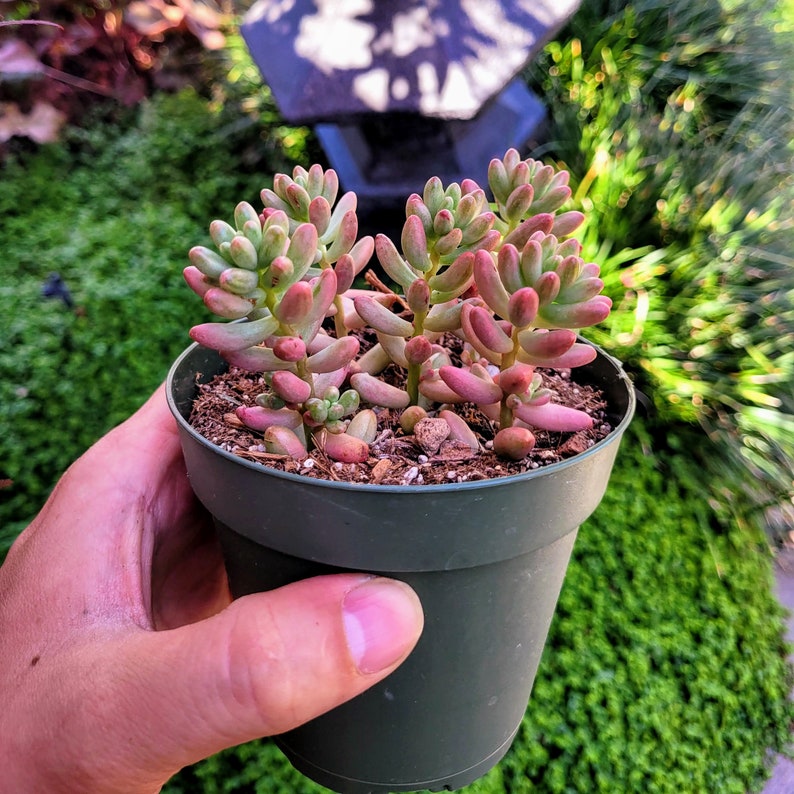
Source: Etsy
Sedum Rubrotinctum ‘Aurora’ Light Requirements
Sedum Rubrotinctum ‘Aurora’ thrives in bright, indirect sunlight. It requires at least 4 to 6 hours of sunlight each day to maintain its vibrant colors and compact growth habit. However, it is important to protect the plant from intense, direct sunlight, as it can cause sunburn and damage the leaves. In terms of cold hardiness, Sedum Rubrotinctum ‘Aurora’ can tolerate temperatures as low as 20°F (-6°C) for short periods. However, it is best to provide protection or move it indoors if temperatures drop below freezing.
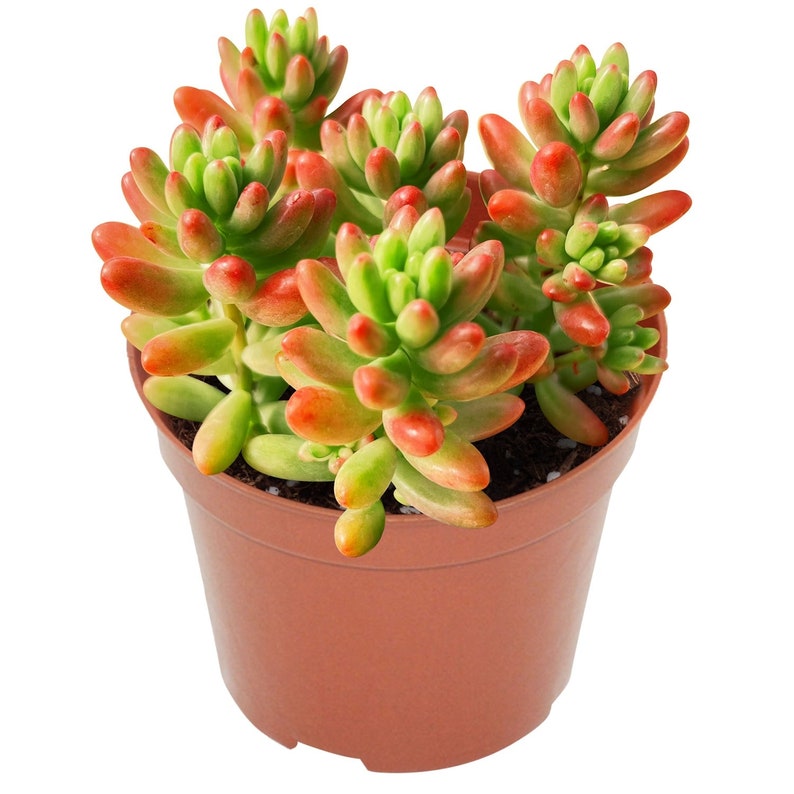
Source: Etsy
Watering Needs and Care
One of the key aspects of caring for Sedum Rubrotinctum ‘Aurora’ is providing proper watering. As a succulent, it is adapted to survive in arid conditions and has low water requirements. It is crucial to allow the soil to dry out completely between waterings to prevent root rot. During the active growing season, water the plant thoroughly and then wait until the soil is dry before watering again. In the winter months, when the plant is less active, reduce the frequency of watering.
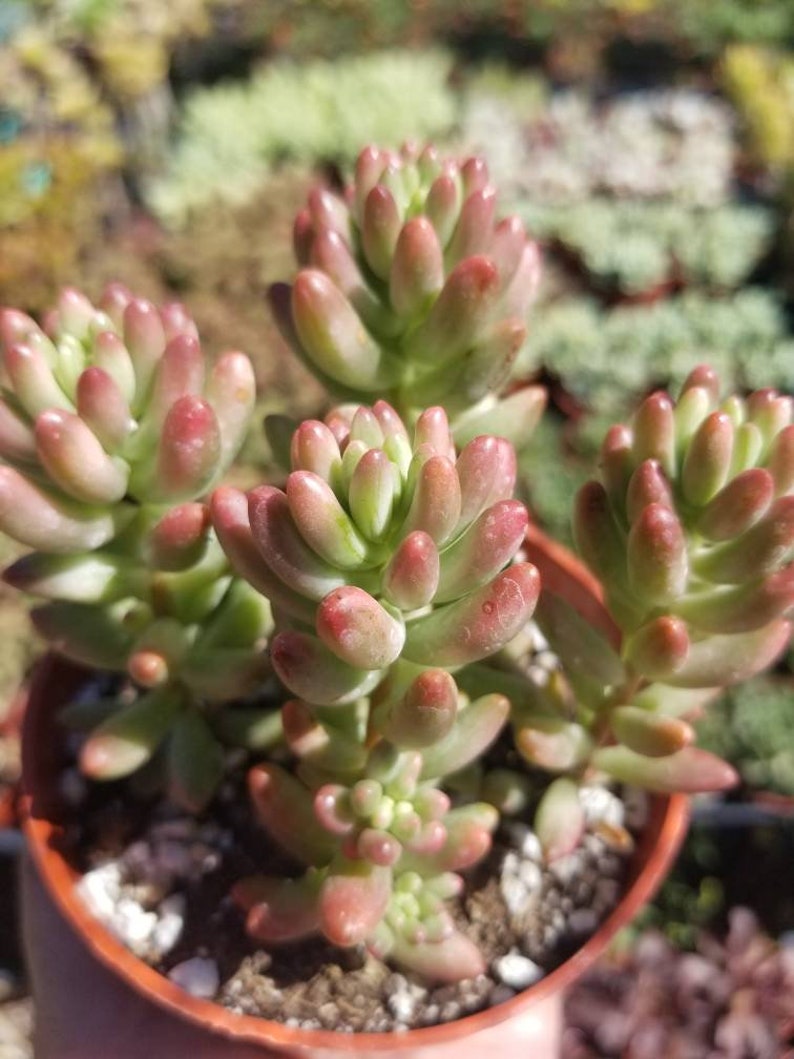
Source: Etsy
Minimum Temperature Tolerance and Rain
Sedum Rubrotinctum ‘Aurora’ can tolerate temperatures as low as 20°F (-6°C) for short periods. However, it is not frost-tolerant and may suffer damage or die if exposed to prolonged freezing temperatures. While it can tolerate occasional rainfall, it is important to ensure that the soil has excellent drainage to prevent waterlogged conditions, which can lead to root rot.
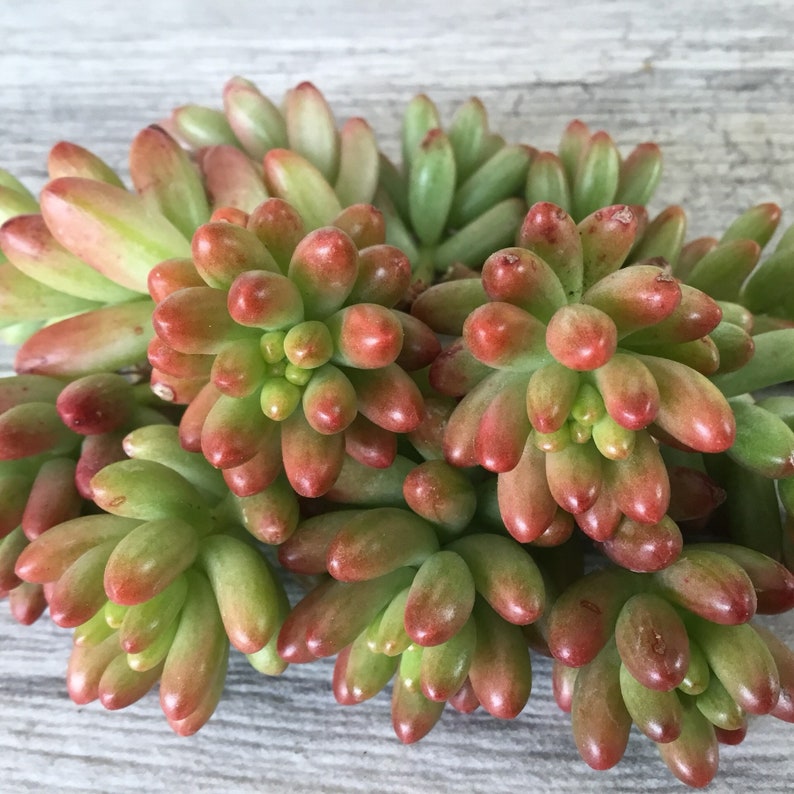
Source: Etsy
Fertilizing Requirements
Sedum Rubrotinctum ‘Aurora’ is a relatively low-maintenance succulent and does not require frequent fertilization. However, you can feed the plant with a balanced, water-soluble fertilizer diluted to half strength during the active growing season.

Succulent fertilizer available to purchase on Etsy.
Apply the fertilizer once every two to three months to provide the necessary nutrients for healthy growth. It is important not to over-fertilize, as this can lead to excessive growth and weak stems.

Source: Etsy
Propagation Methods
Propagation of Sedum Rubrotinctum ‘Aurora’ can be done through various methods, including leaf cuttings and stem cuttings. Here are the steps for each method:
Leaf Cuttings
- Gently remove a healthy leaf from the plant, making sure to include the base where it connects to the stem.
- Allow the leaf cutting to dry and callus over for a day or two.
- Prepare a well-draining potting mix suitable for succulents.
- Place the leaf cutting on top of the soil and lightly press it down, ensuring good contact with the soil.
- Water the soil lightly, being careful not to soak it.
- Place the pot in a location with bright, indirect sunlight.
- After a few weeks, you should start to see roots and new plantlets forming at the base of the leaf.
- Once the new plantlets have grown to a suitable size, you can separate them from the leaf and repot them individually.
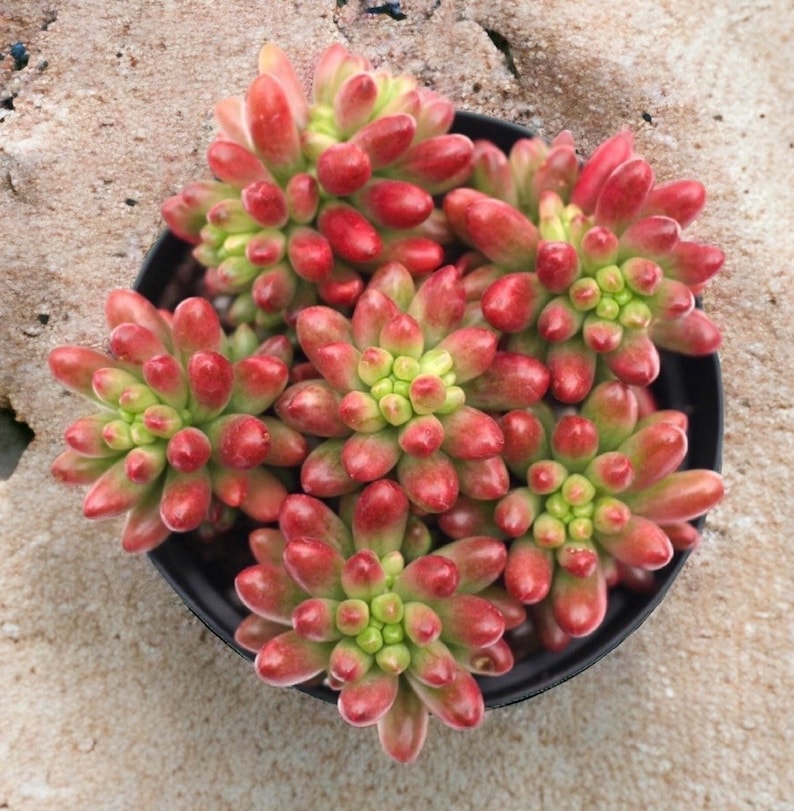
Source: Etsy
Stem Cuttings
- Select a healthy stem from the parent plant and cut it just below a leaf node.
- Allow the cutting to dry and callus over for a day or two.
- Prepare a well-draining potting mix suitable for succulents.
- Insert the stem cutting into the soil, making sure the bottom nodes are in contact with the soil.
- Water the soil lightly, being careful not to soak it.
- Place the pot in a location with bright, indirect sunlight.
- After a few weeks, the cutting should start to develop roots.
- Once the roots have established, you can treat the cutting as a mature plant and follow the care guidelines mentioned earlier.
Common Problems and Solutions
Here are some common problems that you may encounter when caring for Sedum Rubrotinctum ‘Aurora’ and their respective solutions:
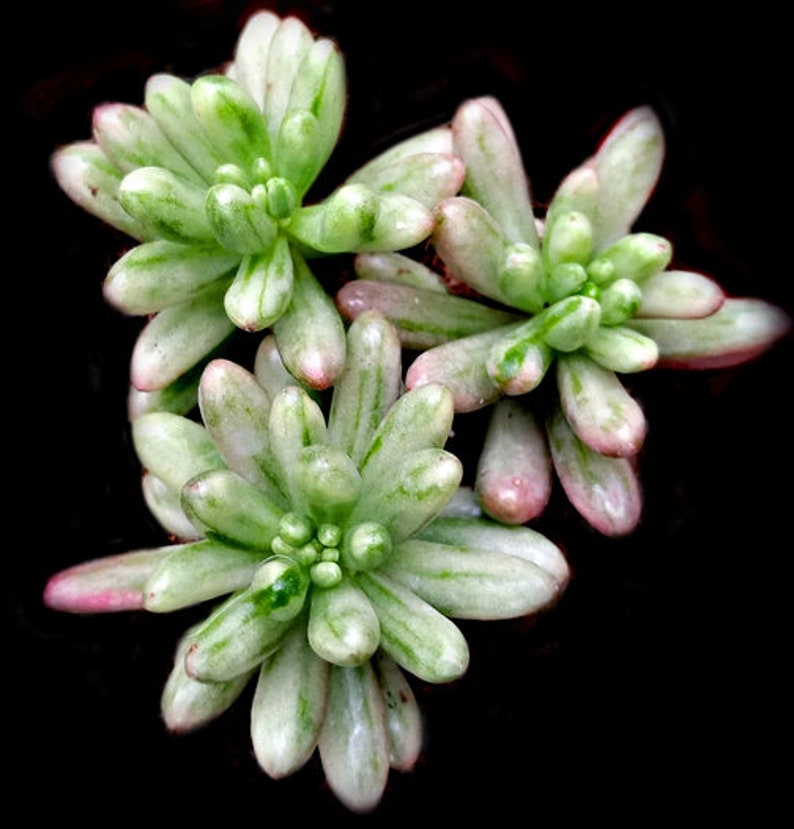
Source: Etsy
Overwatering
Symptoms: Yellowing or rotting leaves, mushy stems, and a foul smell.
Solution: Allow the soil to dry out completely between waterings and adjust your watering schedule accordingly.

Source: Etsy
Sunburn
Symptoms: Brown or black spots on the leaves, especially in areas exposed to direct sunlight.
Solution: Provide shading or move the plant to a location with indirect sunlight to prevent further sunburn.
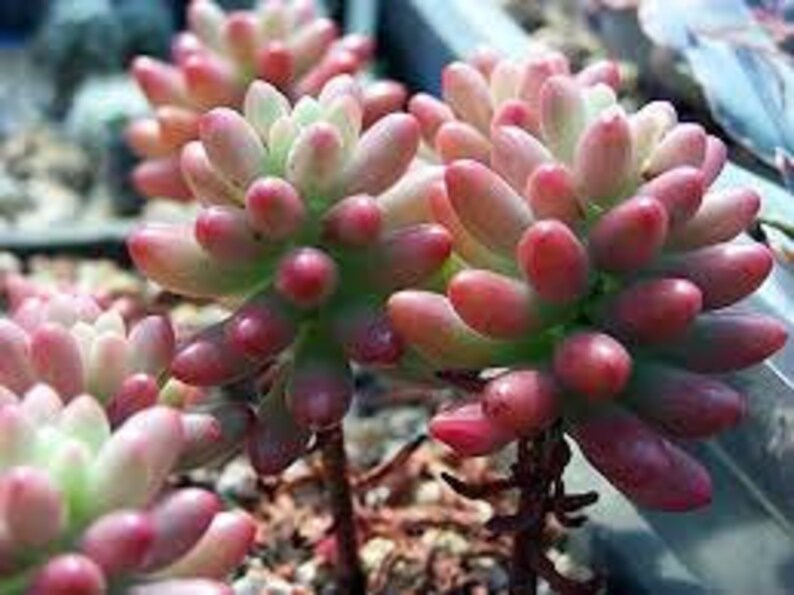
Source: Etsy
Pests
Symptoms: Presence of mealybugs or aphids on the leaves and stems.
Solution: Remove the pests manually or use an organic insecticidal soap to control the infestation.
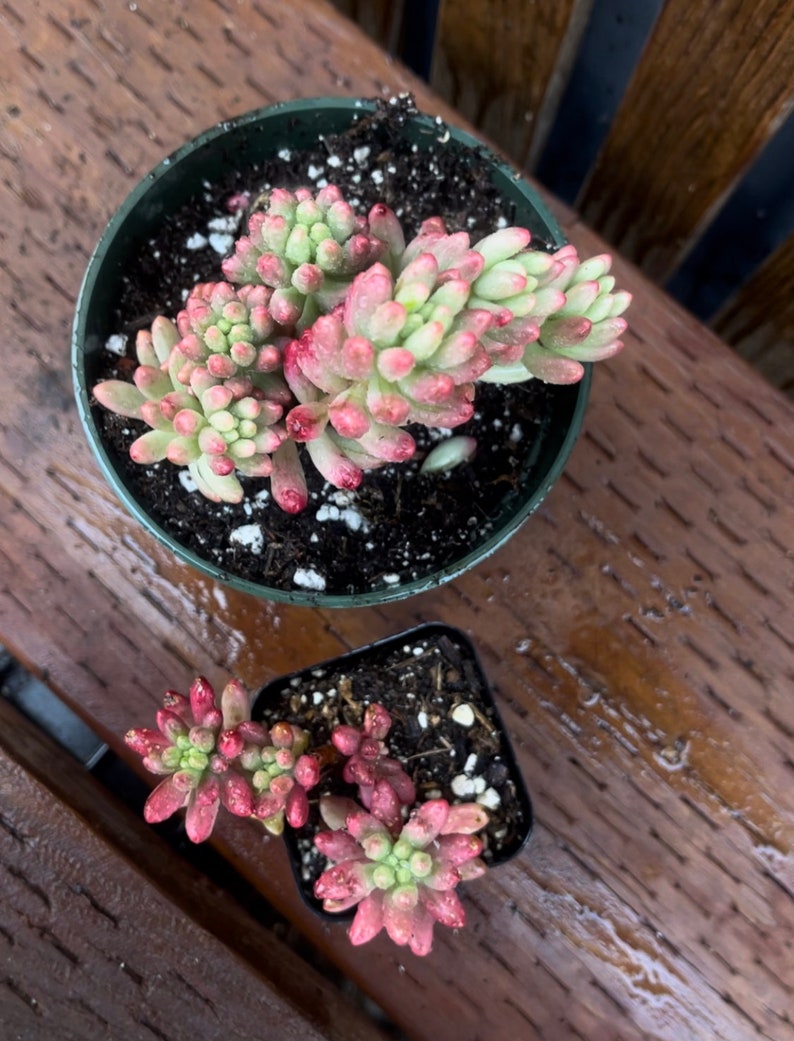
Source: Etsy
Leggy Growth
Symptoms: Long, stretched-out stems with sparse leaves.
Solution: Provide the plant with more light or prune the leggy stems to encourage bushier growth.
Sedum Rubrotinctum ‘Aurora’ is a stunning succulent that can bring a burst of color to any indoor or outdoor space. With its unique adaptations, vibrant appearance, and low maintenance requirements, it is an excellent choice for succulent enthusiasts of all levels. By following the care guidelines provided in this comprehensive guide, you can ensure the health and longevity of your Sedum Rubrotinctum ‘Aurora’ and enjoy its beauty for years to come.

